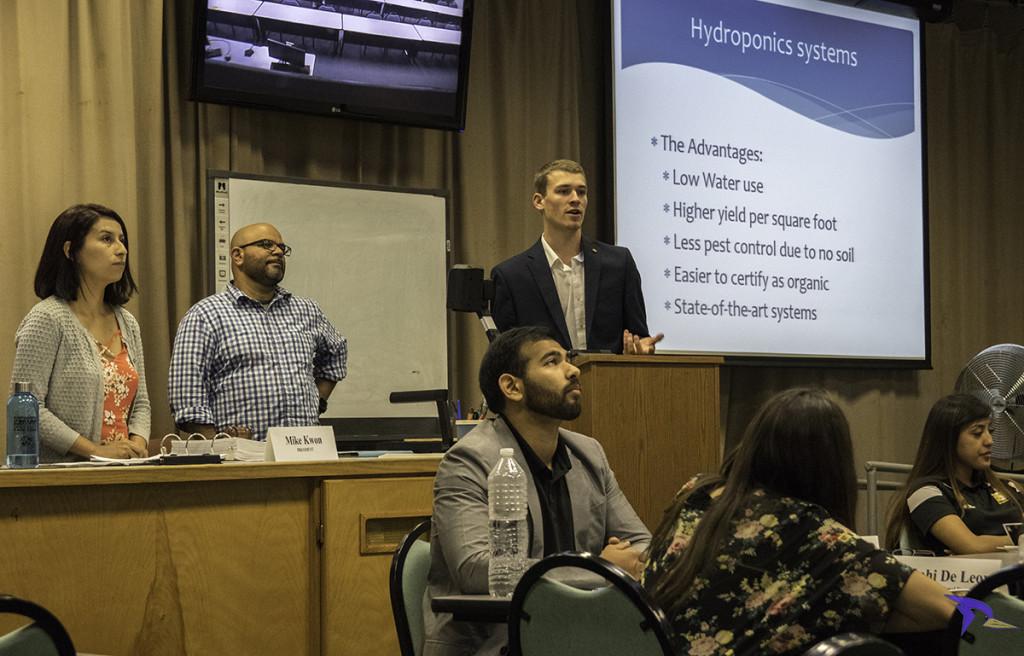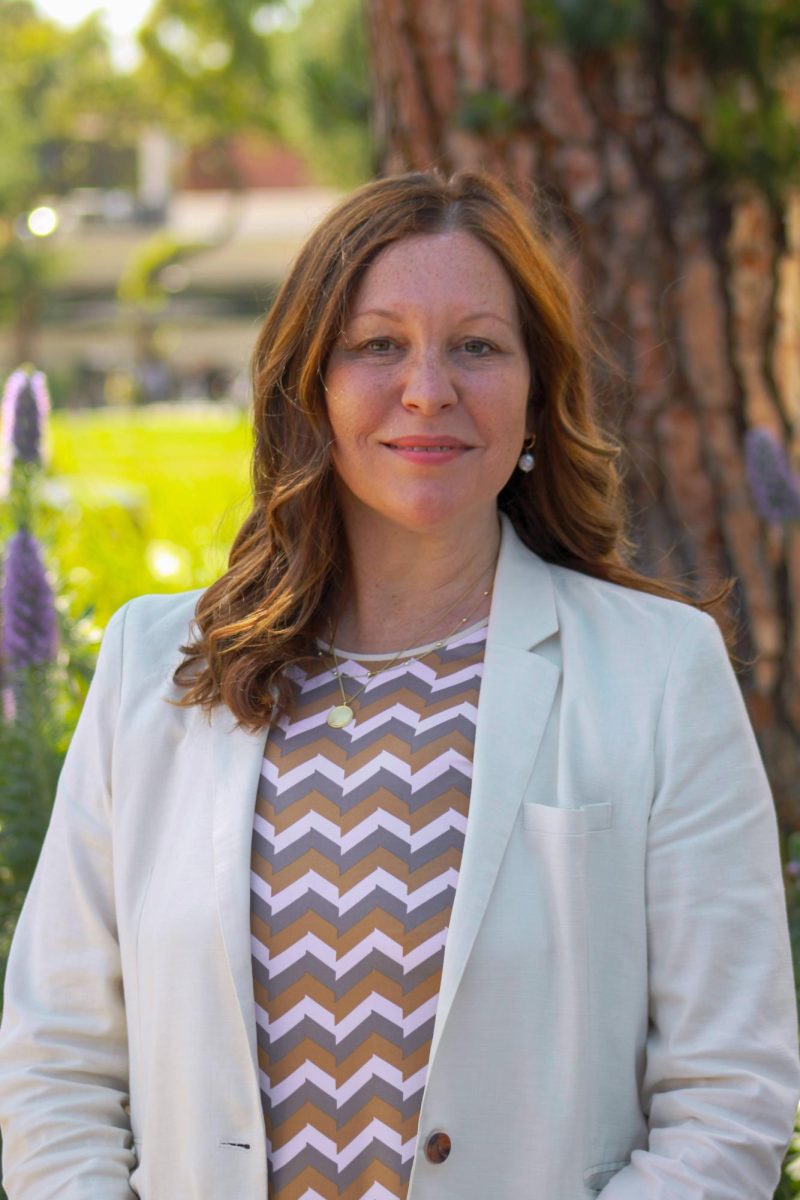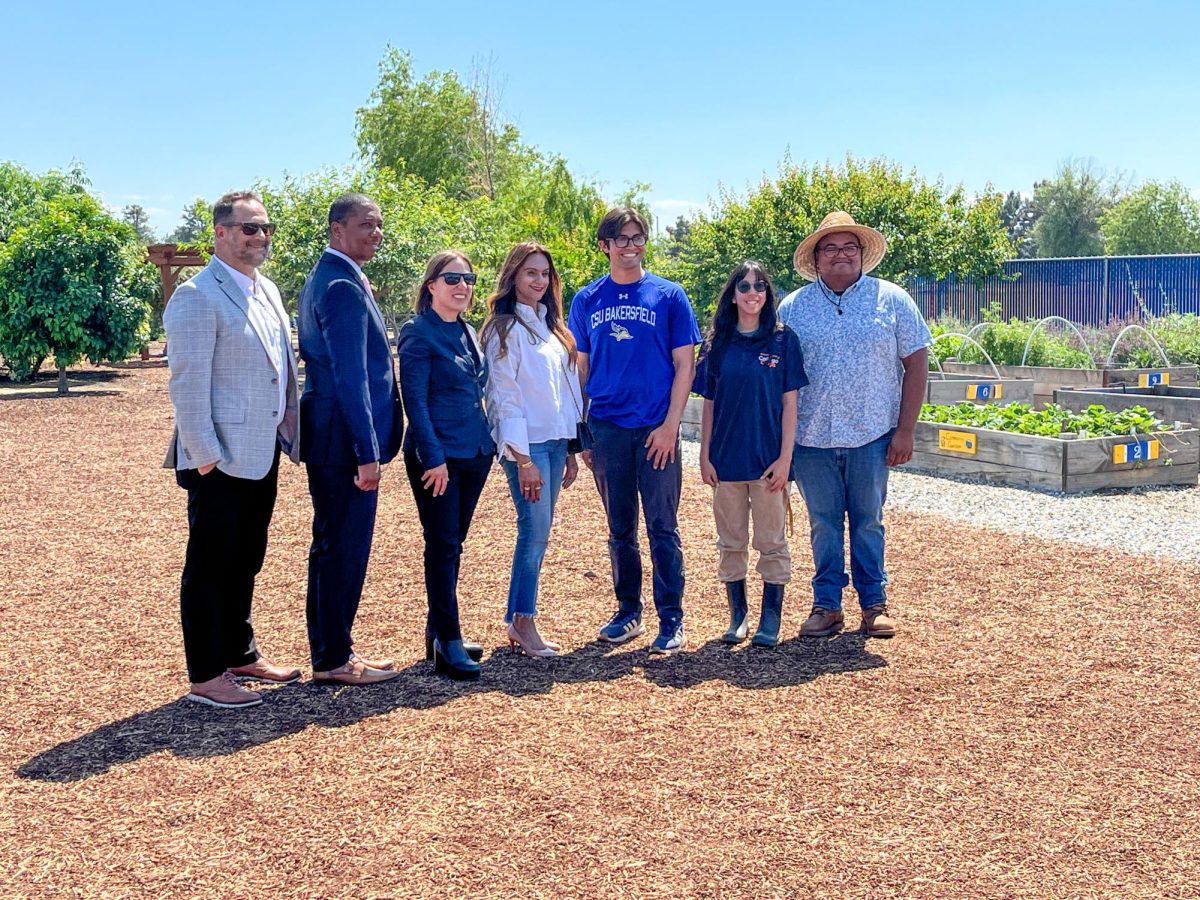Editor-in-Chief
After weeks of discussions, the ASI board approved $42,000 in support of the University Garden’s kitchen during its weekly meeting on May 13 in ITV Studio C.
The decision was not whether the CSU Bakersfield University Garden would be funded by ASI but rather where the $42,000 would go.
ASI Executive Vice President Jennifer Sanchez had three options in the resolution: the farm-to-table demonstration kitchen, student gathering area inside the garden or payment to student assistants and graduate assistants who will be maintaining the garden and reporting to the garden manager.
The board decided on the kitchen.
“I feel like it’s kind of the end of one phase of the garden, but really the beginning of the overall project,” said Sanchez. “There’s still a lot to come, and I’m so excited about it.”
The farm-to-table kitchen will allow students to prepare meals directly after picking from the garden.
Sophomore bio-chemistry major Samantha Martinez said she likes the idea of funding the kitchen but added the amount is a bit high.
ASI Director of Sustainability Oscar Alvarez was in agreement with funding the kitchen.
“I think it allows students the opportunity to cook and all that,” said Alvarez. “At first glance, I was for student jobs, but I think we get into what happens after those $42,000 are gone. Are we still expected to sustain that money? So, if we are only going to do a one-time thing, I’d rather it be the kitchen.”
According to the presentation by Sanchez and former ASI President and Intern to the Office of the President Derek Stotler, the kitchen is estimated to cost from $35,900 to $40,900.
Any changes to items being purchased for the kitchen or the order in which they are being purchased must come from majority vote of the ASI board of directors.
As part of funding the kitchen, the farm-to-table area will be named “The ASI Kitchen” or another name chosen by ASI.
During the presentation for the resolution, former ASI president Derek Stotler said initial build cost would be around $177,760 but added it’s a rough estimate.
The grading drainage costs for one acre would be $9,050, the total costs for 117 fruit trees not including the labor is estimated at $9,282, garden soil amendments for the trees is estimated at $3,180 and the vegetable seeds at $671. The cost for the 46 garden beds is estimated at $12,450, the soil for the garden beds would be at $8,352, the irrigation costs are estimated at $19,064 and the hydroponics costs are calculated at $6,592.
The decomposed granite pathways excluding labor is at $12,824, costs for pavers is at $32,116, the costs for fences is at $18,170, shed costs excluding labor is at $3,700 and the total for the first Pergola 20 by 20 archway is at $6,184 and the other 40 by 20 archway is at $12,368. The solar lighting costs are estimated at $4,578, the costs for the garden maintenance tools is at $1,677, costs for the build tools is estimated at $4,502 and the furniture costs excluding labor is calculated at $13,000.
According to ASI Vice President of University Affairs Anish Mohan, the kitchen, student gathering area and salary for the assistants are part of the estimated $177,760.
Sanchez said the majority will not be raised by student ASI fees.
The majority of funds for the garden will come from donors as well as grants, community partnerships and crowd funding through Indiegogo, which will give incentives and perks to those who donate.
Senior psychology Casey Harris said she likes the idea of having a garden on campus.
“It’s a community garden and will give us healthier food options,” Harris said. “It will enhance our university.”
The total costs per year would be $3,471 with $671 going to seed replacement, $300 for soil replacement, $300 for soil treatments, $200 for fertilizers, $200 for organic pesticides, $600 each for equipment replacement and research materials replacement and another $600 toward advertising and flyers.
They are also planning to pay two graduate assistants $14 per hour and three student assistants $9 per hour. Additionally, they will be looking to have community volunteers.
The on-going funding will come from grants such as the USDA multi-year grants, selling produce to vendors like Aramark and other businesses. Other funding could come from Community Supported Agriculture, community memberships, business yearly donor wall, raised bed and hydroponics system sales, farmers’ markets sales, club participation and volunteers. Additionally, they are looking for funding through salsa production, “Runner Salsa,” and other foods as well as space rental and campus events.
Stotler said they will need to write specific policies for events. However, he added if events exceed 10 to 15 people, it would have to go through 25Live.
Sanchez said if donors fund the kitchen then the $42,000 would go to the student rest area, and if that is funded as well, it would go to paying the student assistants and graduate assistants.
Sanchez added whatever money is left over from the expenses on the kitchen would go to the next options, if they are not already paid for by donors.
The student gathering area is estimated from $59,725 to $68,725.
The student assistants’ proposal would be $20,250 for three student assistants and $28,000 for two graduate assistants for a total of $48,250.
Freshman accounting major Eriel Tan said he wished the funding went to the graduate assistants and student assistants.
The University Garden was originally meant to be on a field by the Student Recreation Center, but the Physical Education and Kinesiology department was using it, so they moved it toward the Roadrunner Softball Complex by where Facility for Animal Care Treatment used to be.
Junior psychology major Melissa Navarro said she wishes the location of the garden was closer onto campus but doesn’t know where else it could be.
The Campus Master Plan Committee meeting approved the garden for 1.75 acres of land.
“I think if it was smack dab in the middle of the campus, I don’t think there would be a negative to that,” said Sanchez. “That would be great, but I don’t think that is going to be a problem just because we are going to have parking out there. It’s already being created for the botanical garden.
“We are going to have a lot of reasons for student to be out there as well as we are going to have bike racks, so they can ride their bikes if they wanted to.”
ASI Vice President of University Affairs Anish Mohan said this project had been in works and researched over a year now.
The garden was presented to the CSU Chancellor Timothy White, and according to Stotler, he liked it.
Stotler added they will be presenting the garden to the Chancellor’s Office at the Housing Displaced and Food Insecure Students summit on June 20-21.
The majority of the garden is going to be vertical, which consists of pots stacked on top of one another. The outlying areas will have the traditional garden beds.
They would also be utilizing 10,000 square feet of hydroponics systems which in these systems the water comes from the top and trickles down through the various basins that are holding the plants.
Stotler said one of the advantages of the hydroponics are low-water usage because it goes directly into the plant and not staying in the soil. The other advantages are higher yield per square foot because it’s growing up, less pest control due to no soil and easier to certify as organic.
According to Mohan, Stotler has been informing himself on hydroponics system for the past couple months.
“He has a pretty strong understanding of what they are and how they work,” said Mohan.
The garden is also planned to feature a welcome center, a student research area, a meditation circle, an outside dining area and outside student lounge area.
Sanchez said they asked students and staff about the three options and added the feedback has been overwhelmingly positive.
The University Garden will also be used for CSUB classes.
Some of the classes that could be in the garden would be: perspectives in biology, introductory to biology — plants, plant diversity, plant physiology, physiological plant biology, internship in biology, food chemistry, food industry practicum, concepts of food analysis and concepts of food science.
“Those professors will take a small component of their class — a lesson maybe — perform it at the garden or do their volunteer hours in the garden,” said Sanchez. “There are classes that require those internship hours or volunteer hours and those would be performed at the garden.”







